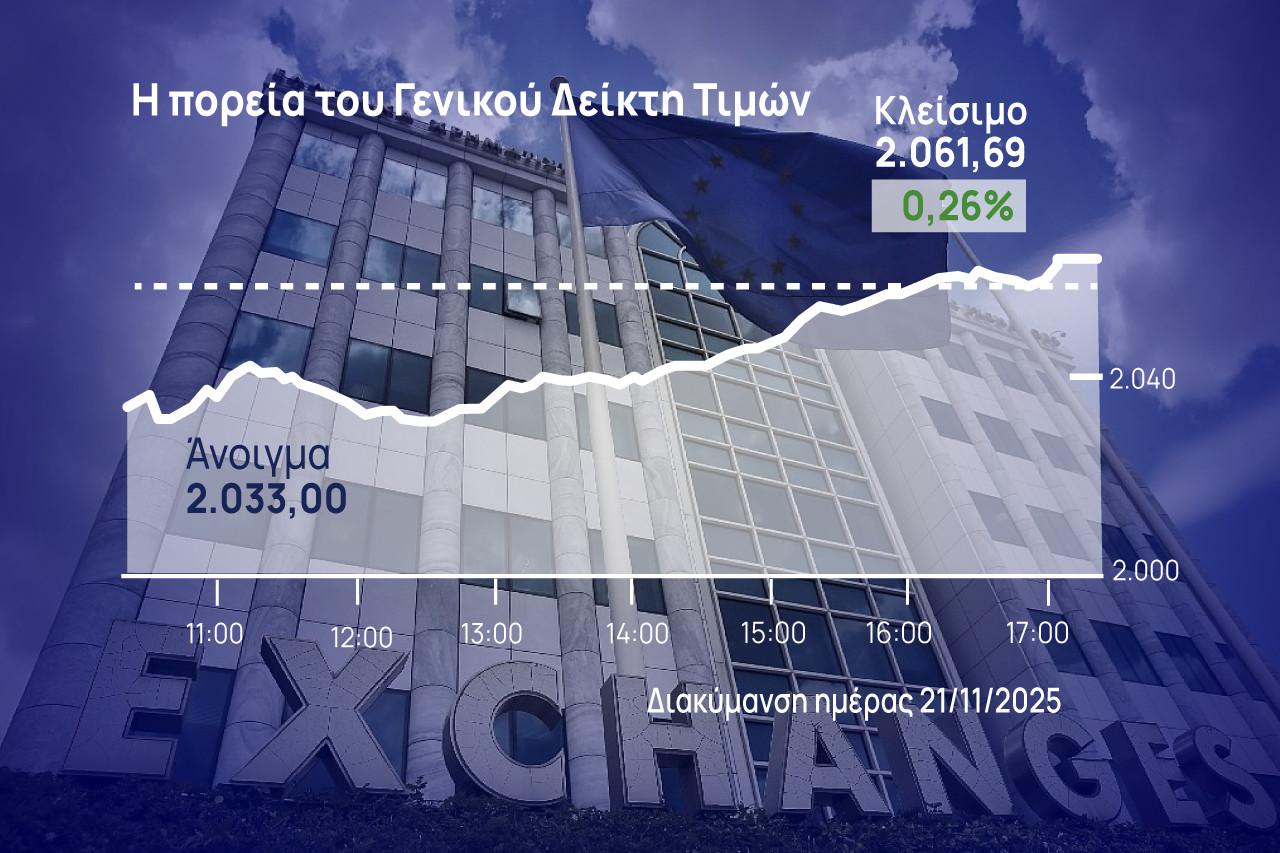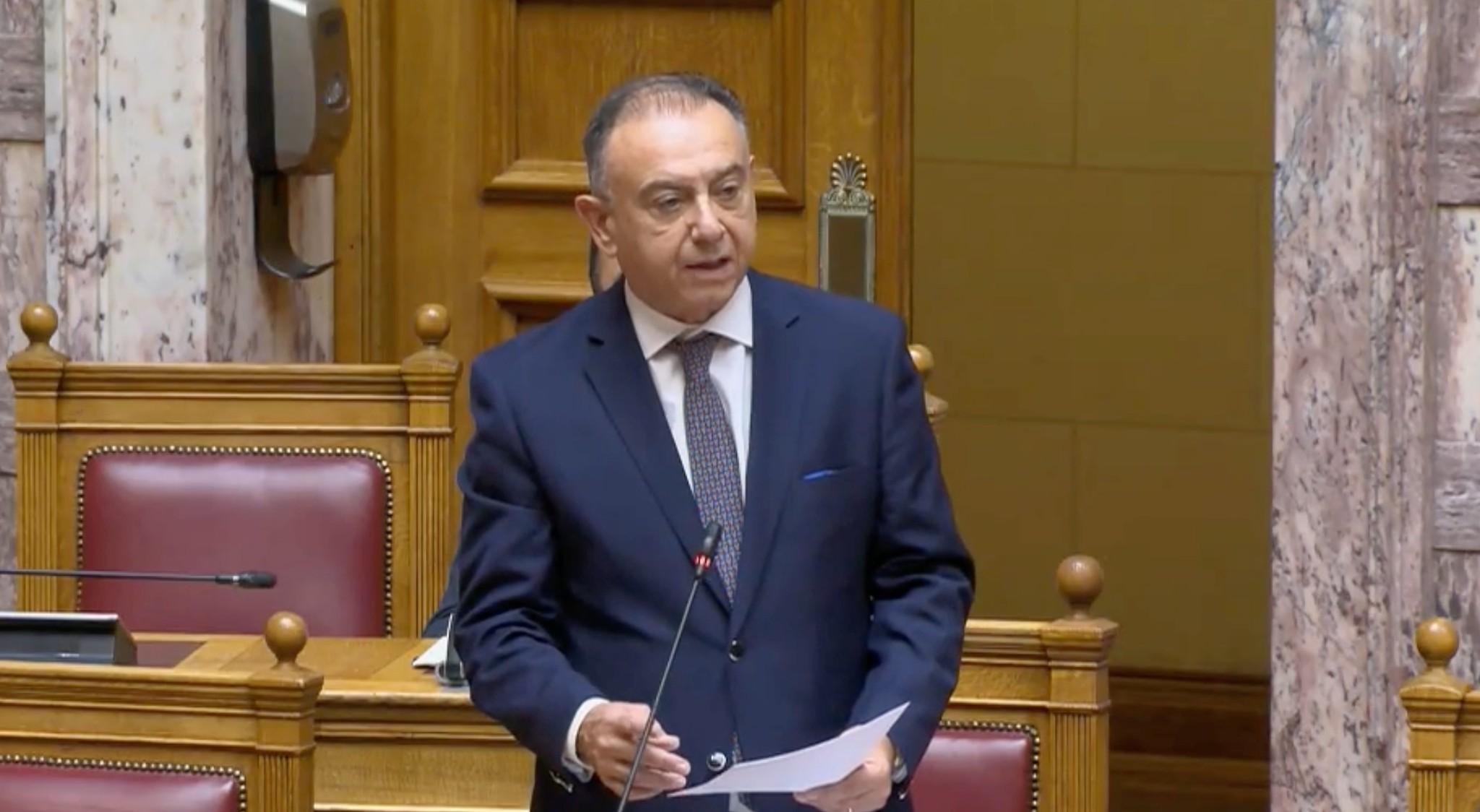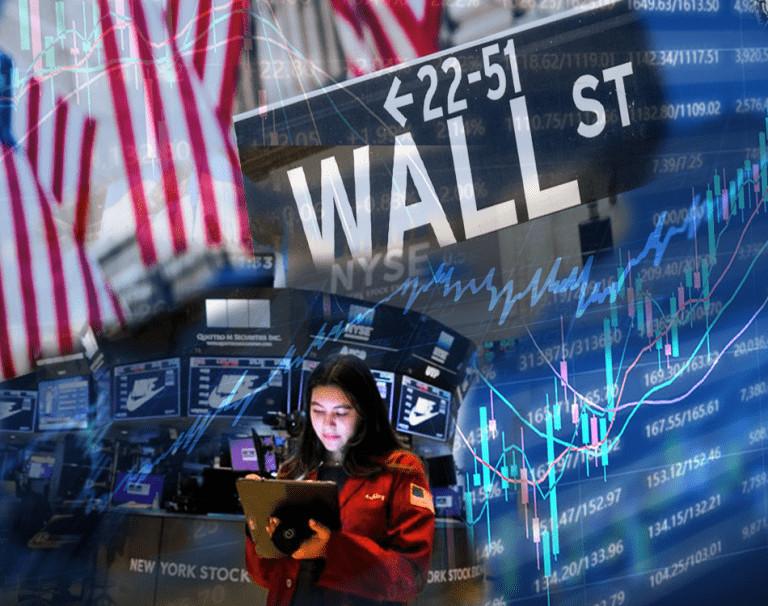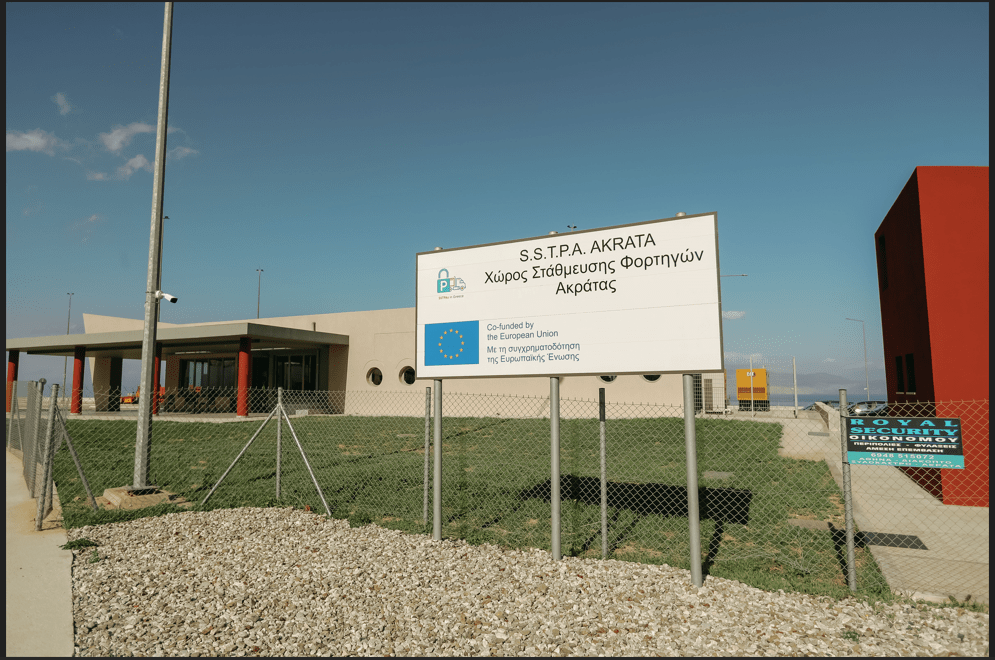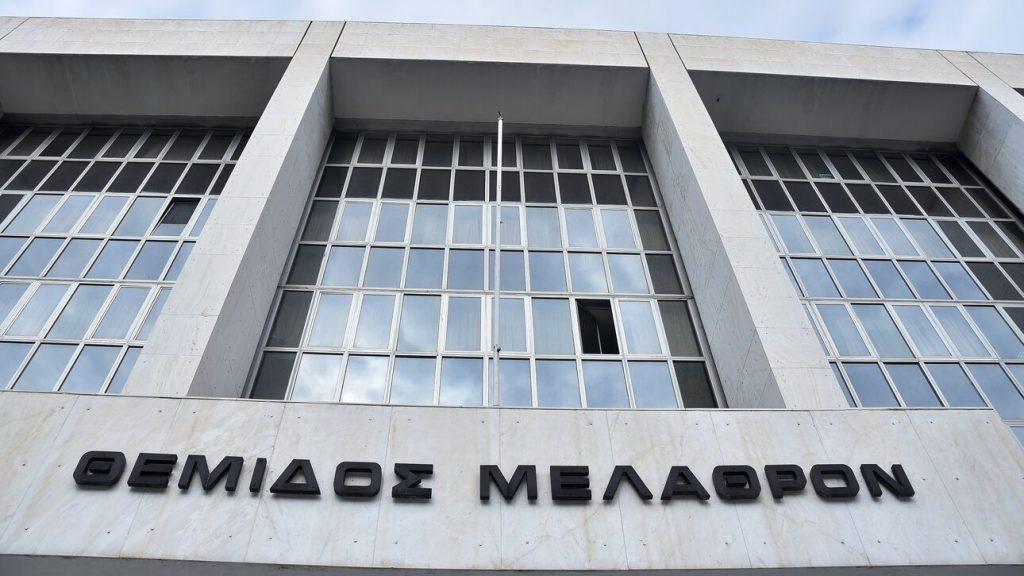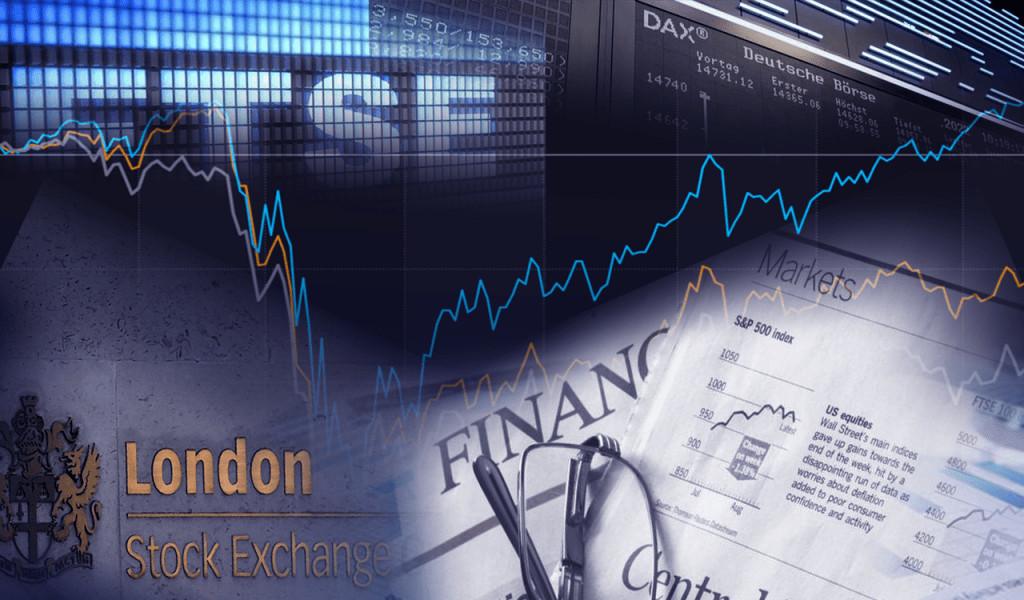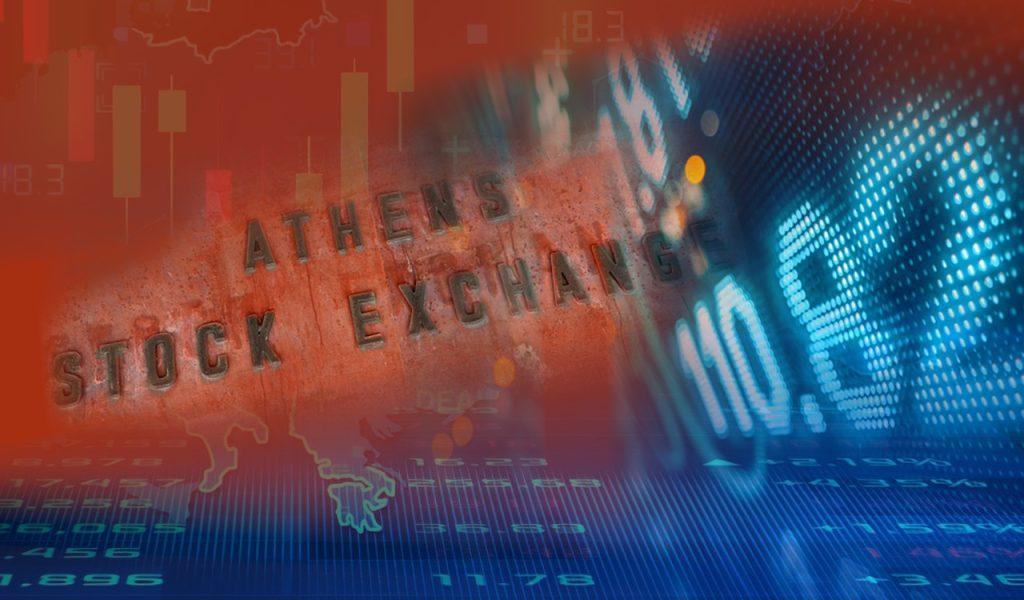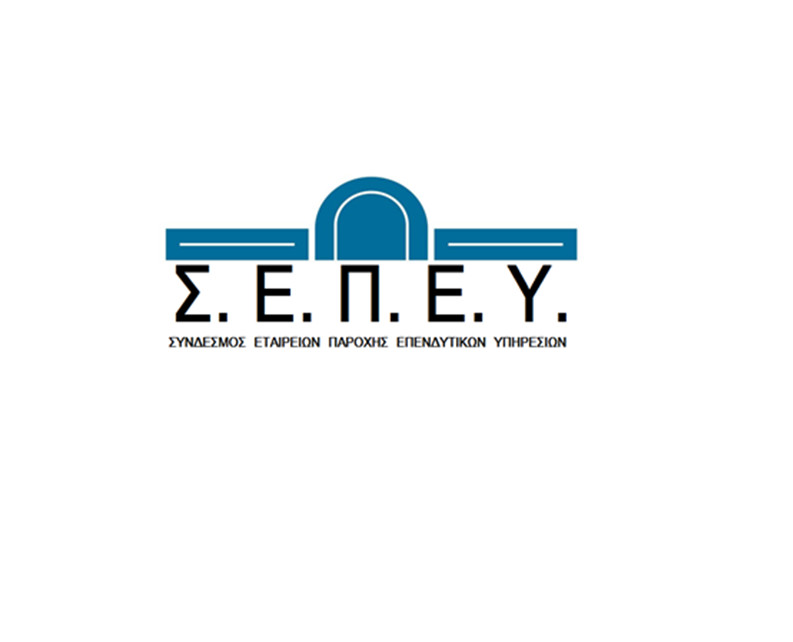Today, in accordance with its Statute, the Bank of Greece submitted its Interim Report on Monetary Policy 2021 to the Speaker of the Greek Parliament and the Cabinet.
Dynamic recovery – Uncertainty about the course of the pandemic and inflation – Positive medium- to long-term prospects
The Greek and the global economy are recovering vigorously after the lifting of containment measures and the restart of economic activity, supported by highly accommodative fiscal and monetary policies. However, unequal access to vaccines between advanced and developing countries, the threat of a new surge of the pandemic due to the Omicron variant, and disruptions in supply chains increase uncertainty and pose risks to the path of inflation and the recovery of the global economy. In addition, a more pronounced and protracted rise in the prices of energy and other raw materials could keep inflation higher for longer and de-anchor inflation expectations, prompting a faster than expected monetary policy tightening, thereby increasing the risk of financial market shocks and of a reversal of the upward trend of the economies.
Turning to the Greek economy, the recent deterioration of epidemiological data, combined with the low vaccination coverage of the population relative to the European average, increases uncertainty and the risks for economic growth. Nevertheless, the medium- to long-term prospects for the Greek economy remain very positive, supported by the launch of investment projects and the implementation of reforms associated with the National Recovery and Resilience Plan.
Dynamic recovery of economic activity in the second and third quarters of 2021
Economic activity recovered at a fast pace in the course of 2021, after a significant recession in 2020 (-9.0%) as a result of the pandemic and the social distancing measures imposed to limit its spread. After the economy reopened, real GDP rebounded strongly in the second and third quarters of 2021. Thus, in the first nine months of 2021, the growth rate of real GDP came to 9.5% year-on-year. This development was mainly driven by a dynamic recovery of private consumption, supported by higher disposable income and an unwinding of pent-up demand, as well as by increased exports of goods and services. Meanwhile, higher business investment spending and public consumption also supported domestic demand. On the other hand, higher imports of goods and services had a negative contribution to growth. On the supply side, a noteworthy recovery was seen in services (driven mainly by tourism), but also in industry and construction. According to available hard and soft data, economic activity is expected to maintain its positive momentum in the last quarter of the year.
Inflation moved into positive territory in June 2021, as economic activity recovered and, at the same time, inflationary pressures emerged, mainly due to disruptions in supply chains and strong increases in international energy prices. The strong inflationary pressures recorded in 2021 largely reflect base effects from negative inflation in 2020, as well as sharp increases in the prices of energy, food and imported intermediate products on the back of global supply chain disruptions. Despite the price increases recorded in recent months, Greece’s inflation rate remains one of the lowest in the euro area and, for 2021 as a whole, is not expected to exceed 0.6%.
Financial sector: Positive developments
During 2021, the investment climate in the Greek sovereign and corporate bond market was very positive, as a result of the inclusion of Greek government bonds in the ECB’s pandemic emergency purchase programme (PEPP), a favourable international monetary and financial environment, and stronger than expected economic growth. Thus, Greek government bond yields, across all maturities, have fallen to historic lows, making it easier for the Greek State to issue new bonds at a low cost, while also keeping the weighted average maturity of new borrowing relatively long, with important benefits in terms of supporting the real economy during the pandemic and improving the structural characteristics of public debt that serve to reduce debt sustainability risks. However, towards the end of the third quarter and during the fourth quarter of the year, in line with expectations of a gradual monetary policy tightening in the United States, there was an upward trend in government bond yields worldwide, as well as in Greek bond yield spreads over German Bunds.
Credit expansion to non-financial corporations slowed in the course of 2021, as the normalisation of firms’ liquidity conditions reduced their demand for bank credit, while the publicly funded programmes aimed to incentivise banks to lend to businesses were of a smaller size in 2021 than in 2020. Nonetheless, the growth rate of bank credit to non-financial corporations remains higher than in 2019, especially for small and medium-sized enterprises. Private deposits are also growing much faster than before the pandemic, while the downward trend in interest rates over a number of years has driven the cost of bank financing for firms to historically low levels.
Projections: Positive outlook for economic activity – temporary increase in inflation
Based on the forecasts of the Bank of Greece, the growth rate of the Greek economy is expected to turn out at 7.2% in 2021. However, the latest national accounts data for GDP, released by ELSTAT only recently and therefore not taken into account in the Eurosystem staff macroeconomic projections for Greece, suggest a significantly stronger growth rate of over 8% for 2021, according to a mechanical update. Growth is projected to be 5.0% in 2022 and 3.9% in 2023, subject to continued strong support from international tourism, euro area recovery and an acceleration of investment.
Private consumption rebounded strongly in 2021, reflecting to a large extent an unwinding of pent-up demand, but also improved economic sentiment. Consumer expenditure is expected to continue to increase over the next two years, albeit at a more moderate pace, in line with rising employment, while some unwinding of savings from the historically high levels recorded during the pandemic is expected to contribute in the same direction.
Investment is expected to grow at very high rates over the next two years. This is attributed to the fact that, by 2029, Greece is envisaged to receive around EUR 40 billion in support from the EU’s multiannual budget 2021-2027 and EUR 32 billion from the European recovery instrument NextGenerationEU, while also attracting foreign direct investment.
Exports of goods are expected to grow at high rates in 2022 and 2023, as the global environment improves and global supply bottlenecks dissipate. Services exports, especially tourism, are expected to trend upwards, after a dramatic fall as a result of global measures to contain the health crisis. At the same time, however, imports are also expected to rise, in line with a recovery of domestic demand, in particular investment.
Inflation, based on the Harmonised Index of Consumer Prices, is expected to post a slightly positive annual average rate in 2021, driven mainly by rising energy and food prices. Inflation is expected to pick up in 2022, with positive contributions from all of its components. However, inflationary pressures are expected to ease in 2023, conditional on an unwinding of global supply bottlenecks, and a fall in the prices of energy and imported raw materials and intermediate products.
Projections for economic activity are subject to uncertainties and risks
The growth outlook is subject to uncertainties and risks. Upside risks are associated with a stronger recovery of private consumption, driven by household savings accumulated during the pandemic, and a faster-than-expected recovery of tourism.
Downside risks are related to the evolution of the pandemic, an acceleration of inflation, a likely increase in NPLs once the state support measures are phased out, and possibly a low absorption rate of NextGenerationEU funds. For instance, new variants of the coronavirus, if vaccine-resistant, could hurt confidence, reduce tourism flows and slow the recovery.
Also, there continues to be increased uncertainty related to inflationary pressures on raw materials, transport costs and energy. Continued inflationary pressures on import prices could dampen private consumption and growth dynamics. Moreover, a faster-than-expected monetary policy tightening in the US could trigger shocks in financial markets, negatively affecting the global and Greek economy.
Finally, a growing bank-sovereign nexus amplifies both fiscal and financial risks.
Banking system – Losses and lower capital adequacy in the first nine months of 2021 associated with NPL transactions
In January-September 2021, banks’ operating income showed a small decline year-on-year. This, along with an increase in operating expenses, mainly due to one-off costs for the restructuring of two systemic banks, led to weaker results before provisions and taxes compared to one year earlier. However, following sizeable provisioning, primarily due to NPL transactions by three systemic banks and secondarily to the need to cover credit risk, banks posted losses.
As regards capital adequacy, in the first nine months of 2021, the Common Equity Tier 1 (CET1) and the Total Capital Ratio on a consolidated basis declined to 12.6% and 15.1%, respectively, at end-September 2021 (from 14.6% and 16.3%, respectively, in September 2020). With a fully phased-in impact from International Financial Reporting Standard 9 (IFRS 9), the CET1 came to 10.7% and the Capital Adequacy Ratio to 13.3%. At the EU level, based on European Banking Authority (EBA) data for June 2021, the corresponding weighted average CET1 ratio was 15.5%.
The quality of Greek banks’ regulatory own funds deteriorated further, as Deferred Tax Credits (DTCs) amounted to EUR 14.4 billion in September 2021, accounting for 62% of total regulatory own funds (up from 53% in December 2020).
Decline in non-performing loans (NPLs) in the first nine months of 2021 in the context of the Hellenic Asset Protection Scheme (HAPS) – No room for complacency, as new NPLs continue to emerge and the full impact of the pandemic on banks’ asset quality is expected to become visible with a lag
The stock of NPLs fell to EUR 20.9 billion at end-September 2021, down by EUR 26.3 billion from end-December 2020 and by EUR 86.3 billion from their March 2016 peak. This reduction in NPL stock in 2021 was achieved mainly through loan sales amounting to EUR 26.2 billion (making use of the HAPS) and to a lesser extent through active NPL management (i.e. loan restructurings/forbearance, collection of arrears, collateral liquidation, etc.). The reduction of NPLs was also supported, after the moratoria on loan repayments were lifted, by the easier repayment terms given by banks to facilitate their customers.
The ratio of NPLs to total loans decreased significantly, but remained high (15%) in September 2021 relative to the EU average (2.3% according to European Banking Authority data). The NPL coverage ratio from accumulated provisions came to 43.5%, from 44.4% in September 2020.
Overall, banks are making efforts to improve their asset quality and strengthen their financial position. In a few cases, however, mostly amongst smaller banks, this effort still needs to be stepped up. Moreover, the magnitude of the fallout from the pandemic, which cannot yet be quantified, is expected to manifest itself with some lag, i.e. after the support measures have been fully lifted. Thus, banks need to continuously reassess the adequacy of their provisions for credit risk, strengthen their early warning systems for potential defaults, while a careful phasing-out of the support measures by the Eurosystem, the EU, the government and supervisors will also be crucial.
Challenges
The main challenge for the Greek economy in the short term is to contain the pandemic more effectively, as vaccination coverage of the population falls short of the EU average, while the health impact of the pandemic is more severe by European standards.
Another major challenge concerns the capacity of the public and private sector to fully and in a timely manner absorb the financial resources available from the NGEU in 2021-2026 and the NSRF in 2021-2027.
The banking sector has its own share of challenges to face: weak profitability and the need to quantitatively and qualitatively enhance their capital adequacy ratios, in view of the high share of deferred tax credits (DTCs) in banks’ capital and the still high NPL ratio.
Despite having made considerable progress, the Greek economy has yet to obtain investment grade rating. This poses a number of problems, but most importantly mainly deprives the Greek economy of much-needed inflows of funds from abroad that could benefit many branches and sectors, in the form of low-cost credit or as equity financing. The decision on 16 December of the European Central Bank to continue to purchase Greek government bonds after March 2022 and until at least the end of the reinvestment period in late 2024, over and above rollovers of redemptions of bonds purchased by the Eurosystem under the Pandemic Emergency Purchase Programme (PEPP), is expected to maintain favourable financial conditions and low borrowing costs for both the public and private sectors of the Greek economy. In this sense, the ECB decision provides a ‘window of opportunity’, which Greece must not miss in order to obtain investment grade.
In view of the significant increase in Greece’s public debt, ensuring its sustainability becomes a primary objective of fiscal policy. Thus, after the economy fully opens up, a main concern for economic policy will be to safeguard fiscal sustainability through the achievement of primary surpluses. The positive growth effects of the European recovery instrument facilitate the fiscal adjustment needed to ensure (or improve) public debt sustainability. The review of existing EU fiscal rules, post-pandemic, needs to focus on the counter-cyclicality of fiscal policy, so as to safeguard economic growth and a sustainable downward path of public debt, taking into account the particular macroeconomic circumstances of each country.
Finally, the climate change currently unfolding has highlighted, as a new challenge for the economy, the need to transition to cleaner forms of energy. However, the lack of sufficient progress in energy storage technology is holding back the green transition.
Preconditions for a sustainable recovery
In the short term, maintaining the growth momentum of the last quarters, in the light of the new coronavirus variants, will hinge on the ability to avoid new generalised restrictions. However, this would require stepping up efforts to increase vaccination coverage of the population and shore up health services in order to contain the health crisis and alleviate the pressure on the healthcare system. Any new measures to contain the pandemic must have a limited budgetary impact, so as to avoid a further drag on fiscal aggregates that would delay a restoration of fiscal sustainability.
In the medium term, the transition to a sustainable, extrovert economic model, with high growth rates of 3%, on average, over the next decade, would call for the effective utilisation of EU resources, implementation of the reforms included in the National Recovery and Resilience Plan, an improvement in fiscal aggregates, and increased lending to the real economy.
Over the next eight years, the Greek economy will be allocated over EUR 70 billion in funding under the EU’s multiannual budget 2021-2027 and the European recovery instrument NextGenerationEU. Full and timely utilisation of these funds would increase investment and close the investment gap caused by the decade-long debt crisis; enhance total factor productivity in the long term; and contribute to the digital and green transition of the economy.
Priority must be given to reforms aimed at further opening up goods and services markets; enhancing labour market flexibility; investing in education; improving public sector efficiency, the digitalisation of the private and public sectors; and a speedier delivery of justice.
Strengthening the growth momentum and ensuring its diffusion across the entire spectrum of economic activity requires increased financing of the real economy, especially small and medium-sized enterprises. Contributions in this direction can be expected from increased private sector saving and utilisation of the financial instruments of the Hellenic Development Bank, the European Investment Bank (EIB) and the European Investment Fund (EIF), which reduce the credit risk borne by banks and improve lending conditions for businesses.
Moreover, implementation of the National Recovery and Resilience Plan is expected to help preserve jobs and create new ones. At the same time, active employment policy programmes will need to be further enhanced to facilitate the reintegration of the long-term unemployed into the labour market, to support employment in vulnerable social groups and regions facing higher unemployment and to improve the match between labour market needs and higher education, in order to ensure an adequate supply of skills. Effectively linking the labour market with the needs and opportunities to be generated by the 4th Industrial Revolution will be decisive for the future of the Greek economy.
Post-pandemic, Greece will need to turn today’s general government primary deficit – inevitable due to the necessary measures in response to the pandemic – into a surplus, bearing in mind that the current juncture of low interest rates may be reversed if inflationary pressures persist. Ensuring public debt sustainability through the achievement of primary surpluses and credible adherence to the rules of the new EU fiscal framework, currently under review, is necessary to safeguard the credibility of public finances. This will help speed up the reduction of the public debt ratio. The sustainability of public debt is enhanced by its favourable characteristics, such as its composition and the structure of repayments, although these features are not of a permanent nature. Thus, Greece needs to take advantage of the favourable macroeconomic environment over the next period, characterised by high growth rates (due to utilisation of the Recovery and Resilience Facility resources), in order to achieve a rapid scaling down of the debt-to-GDP ratio, while maintaining low gross financing needs. This is because the gradual replacement of official sector debt with borrowing on market terms in coming years may increase the risks from a possible increase in market refinancing rates, in the long term. It should be stressed that the sustainability of public finances through the formulation of a credible medium-term fiscal strategy is a prerequisite for the Greek economy to see its credit rating upgraded and regain investment grade.
As regards the review of the EU fiscal rules, an appropriate balance needs to struck between stabilising the economic cycle, on the one hand, and safeguarding the sustainability of public finances, on the other. At the current juncture, the significant increase in euro area public debt makes ensuring sustainability a top priority for fiscal policy, and reining-in the growth rate of public expenditure is a fitting means for achieving this objective. In this context, weaknesses in the Stability and Growth Pact rules that, in the past, led to pro-cyclical fiscal policy, i.e. fiscal tightening in downturns and fiscal expansion in upturns, ultimately deteriorating debt dynamics, should be addressed. The adoption of a medium-term countercyclical fiscal policy, which foresees a fiscal tightening in good times and expansion in bad times, is particularly important for heavily indebted countries, as it guarantees a sustainable downward path of government debt.
As regards the banking system, given the relatively low quality of bank capital, as deferred tax credits make up the largest part of total regulatory own funds, and the impact of International Financial Reporting Standard 9, their capital base needs to be strengthened quantitatively and qualitatively and their core profitability enhanced. A positive development is that banks have begun to strengthen their capital base, through capital increases and bond issuance. However, the significant challenges that lie ahead, for instance the NPLs likely to emerge after the pandemic, the gradual return to normalcy and the eventual withdrawal of support measures (supervisory, fiscal and other), the need to comply with minimum requirements for own funds and eligible liabilities (MREL), the impact of climate change, the need to develop new sources of revenue, etc., call for continued vigilance and intensified action to further reduce NPLs, to strengthen their capital base and to use their increased liquidity towards financing the economy.
Despite the significant decline in NPLs, private and corporate debt remains and does not vanish through the transfer of NPLs from banks’ balance sheets to investors. It is therefore crucial that NPL Servicers effectively manage the stock of NPLs, as this is necessary for a restructuring of viable enterprises and for the success of the HAPS. This presupposes a utilisation of the out-of-court debt workout mechanism and the provisions of the recent law on debt workout and second chance, but more importantly that NPL Servicers offer robust private debt workout solutions to viable borrowers, to enable them to return to business. It goes without saying that the State must also take steps to ensure a speedier delivery of justice and to remove the various obstacles to the smooth implementation of the out-of-court debt workout mechanism and the provisions of the law on debt workout.
***
The restart of the economy since the second quarter of the year has contributed to a significant increase of economic activity. Business expectations have improved throughout the year, while key economic indicators in industry, construction and exports have remained very positive during the second half of the year.
However, the worsening epidemiological situation in recent months, growing concern about new variants of the coronavirus, as well as the spike in energy costs, raw material prices and, more generally, imported inflationary pressures, add to uncertainty, affect confidence and increase risks to the economic growth rate in the coming quarters. At the same time, however, the launch of projects under the National Recovery and Resilience Plan, the attraction of private investment, high savings, an increase in disposable income and the continued favourable financing conditions due to the accommodative monetary and financial policies are factors of optimism about the course of the economy in the quarters ahead.
In the medium term, use of NGEU funds, implementation of the reforms included in the National Recovery and Resilience Plan and the supply of credit by a robust banking system can be expected to boost investment, support the green transition and the digital transformation of the economy and contribute to increasing total factor productivity and structural competitiveness. This will enable the economy to address the challenges and solve problems, part of which are a legacy of the debt crisis, and will lead to a transition to a sustainable, extrovert and inclusive production model.

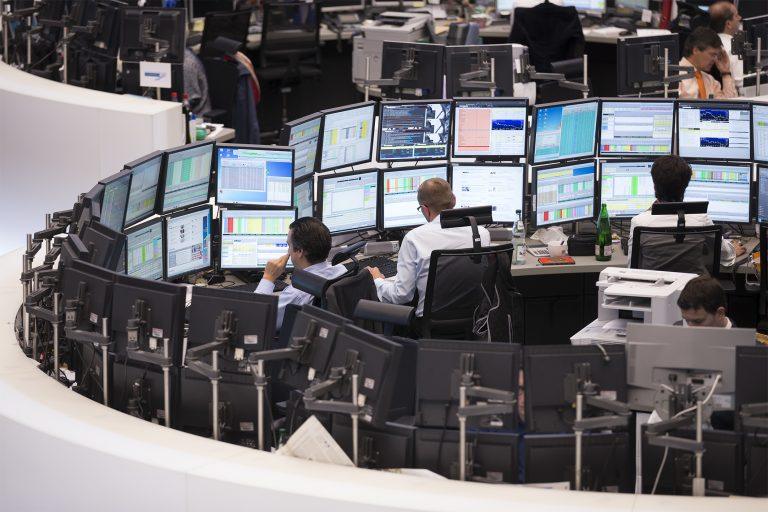



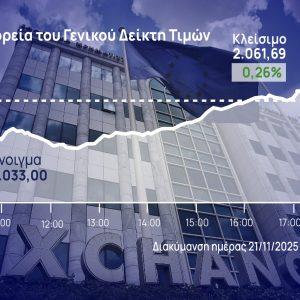





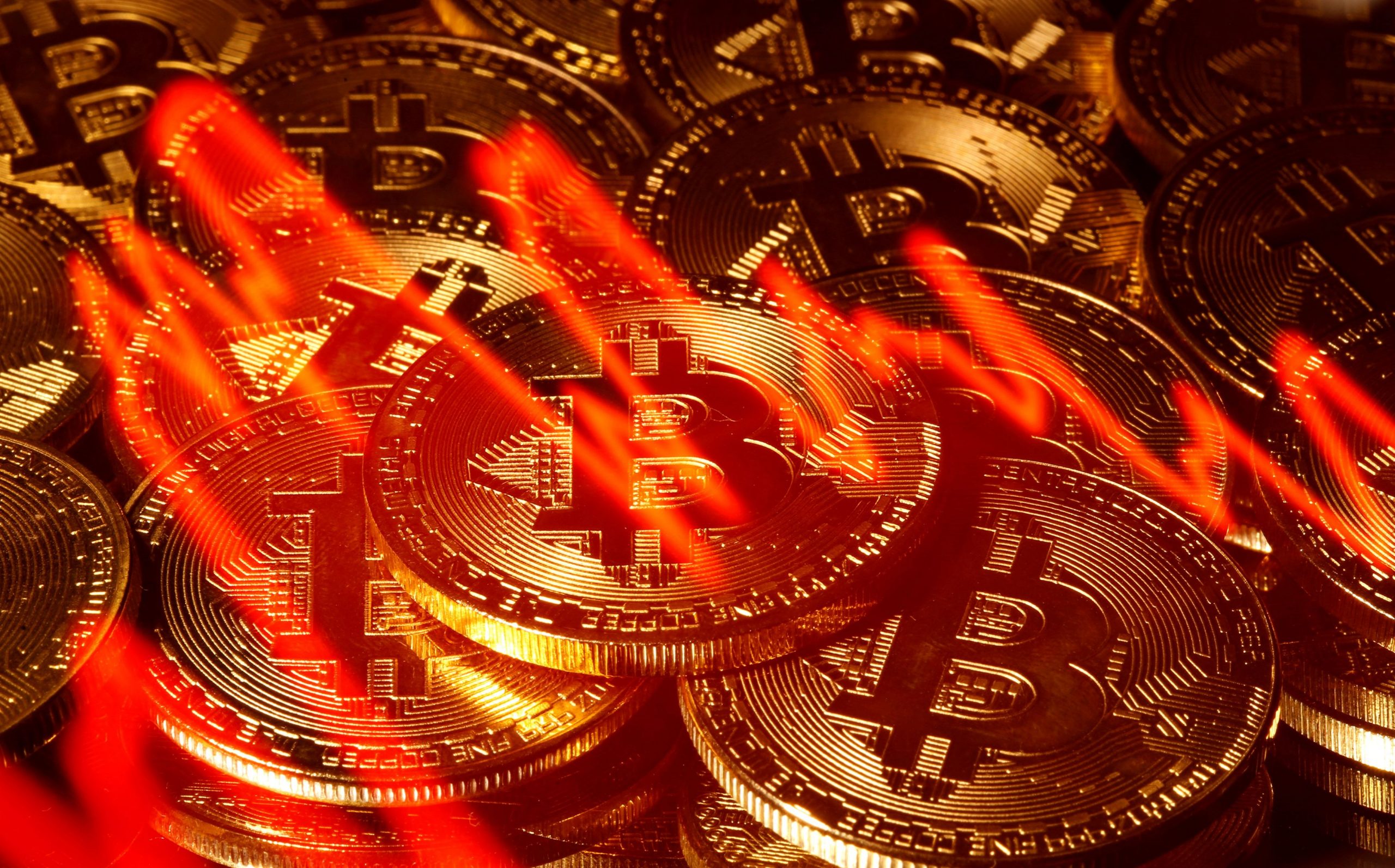
![Δημόσιο Χρέος: Η ακτινογραφία του δημοσίου χρέους για τα επόμενα χρόνια [πίνακες]](https://www.ot.gr/wp-content/uploads/2025/11/ot_greek_debt5555-1024x600-1-1.jpg)



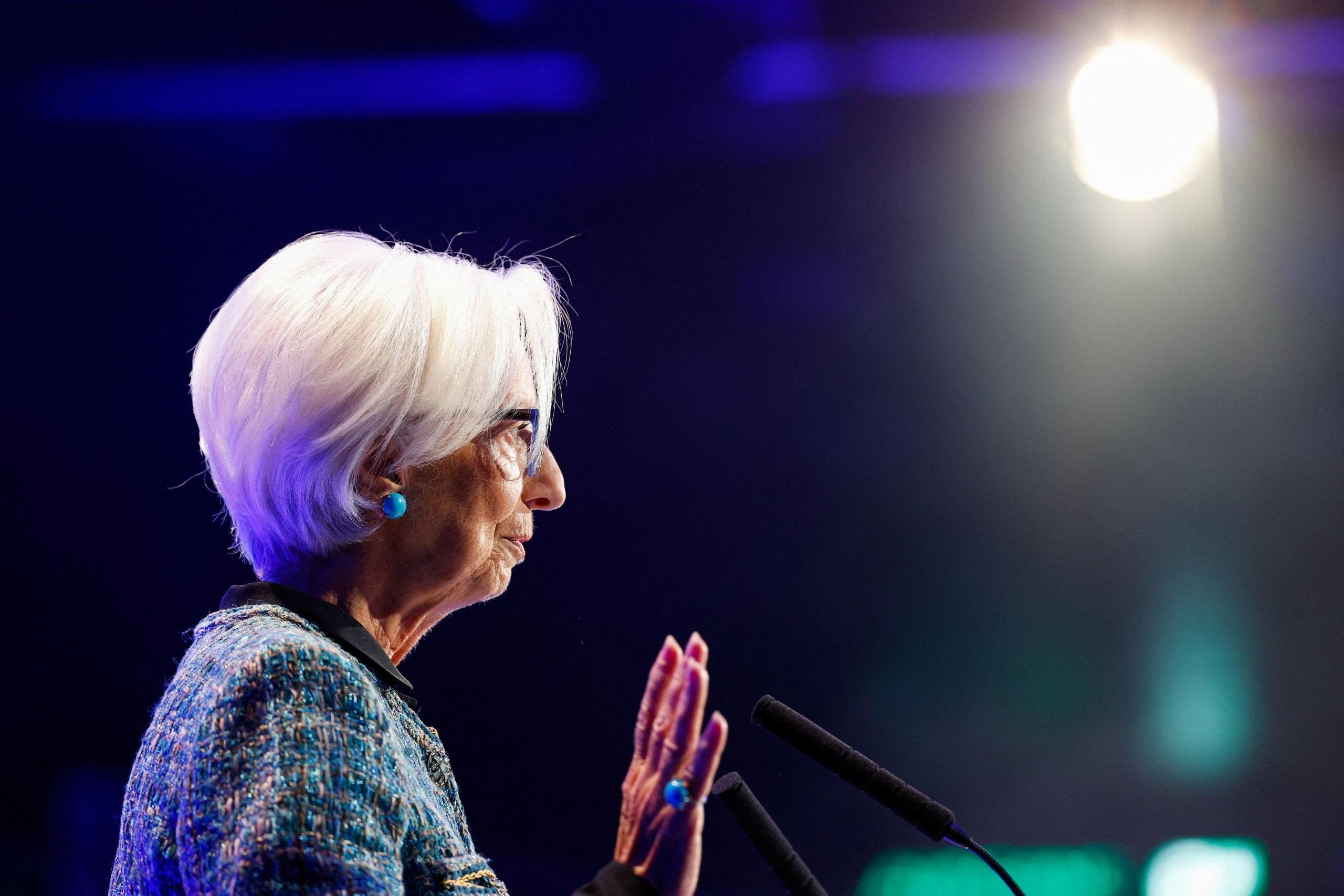
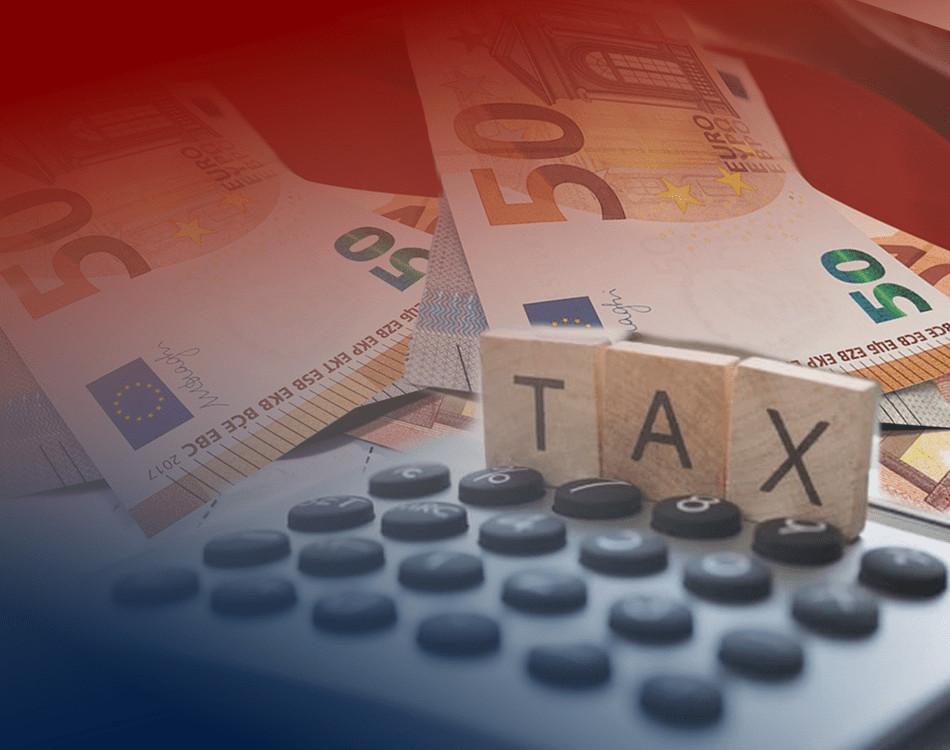
![Έκπτωση φόρου για δαπάνες που αφορούν λήψη υπηρεσιών για ενεργειακή, λειτουργική και αισθητική αναβάθμιση κτιρίων [Μέρος Β]](https://www.ot.gr/wp-content/uploads/2023/09/exoikonomo.jpg)







